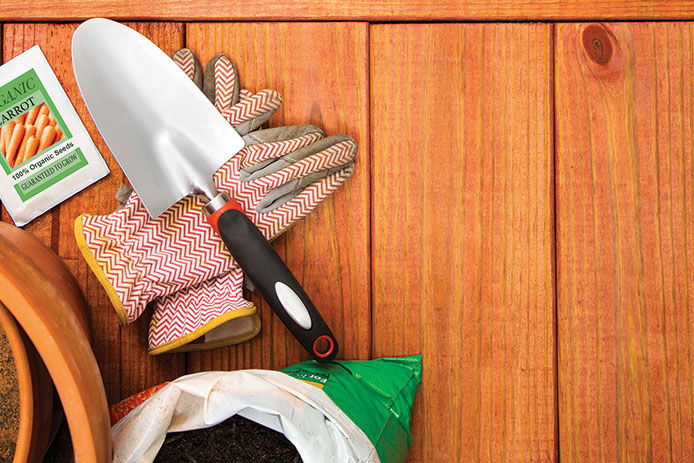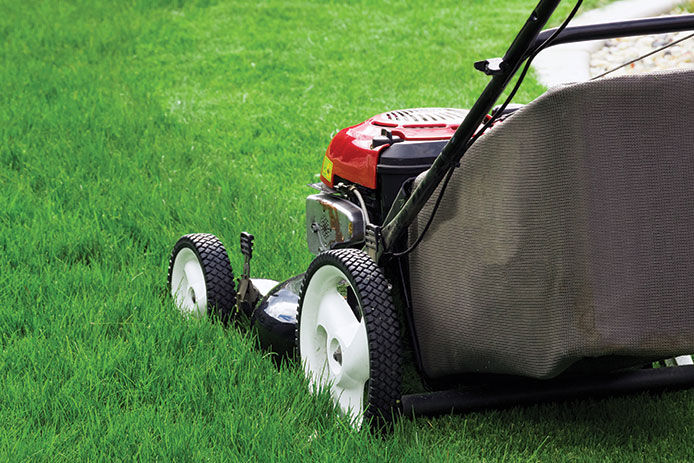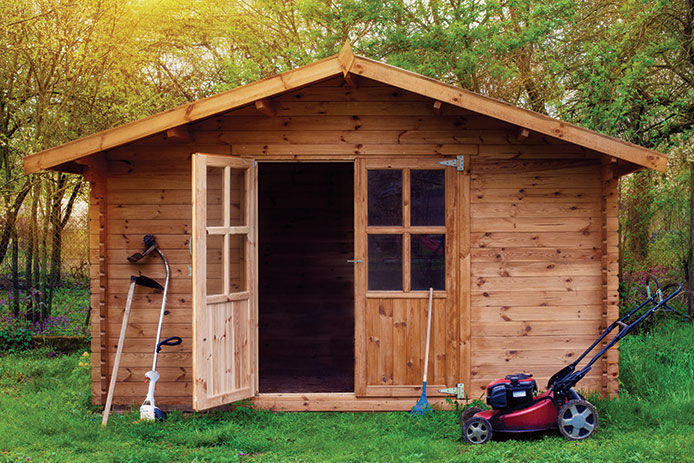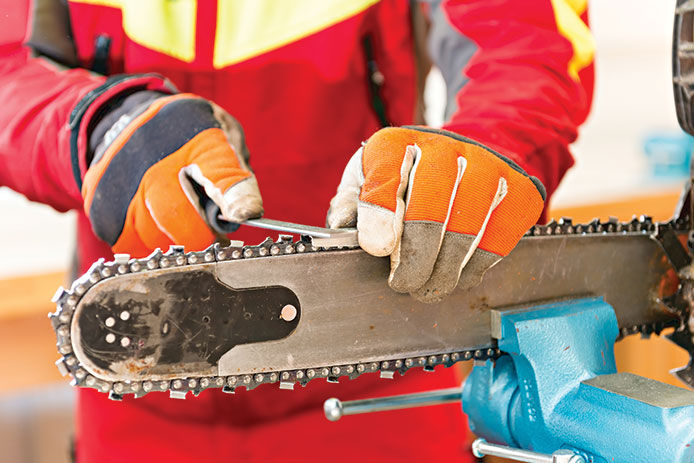Garden Tool Care and Maintenance

Gardening is more than just a way to make your yard look nicer. Multiple studies have shown that it improves moods, boosts concentration, and reduces stress while offering a mild full-body workout. Of course, that workout is only mild and stress is only reduced if your garden tools work properly. Otherwise, you may find it a stressful task when a lawn mower refuses to start or your pruner shears are too sticky to open. Get the most out of a full season of gardening by taking a little time each year for tool care and maintenance.
Cleaning and Maintaining Hand Tools

Hand tools are often chosen specifically because they don’t require the oil changes and tune-ups that power tools need. However, they still need some basic cleaning and maintenance to work their best year after year. This is especially true if you’re the type to leave tools outside during the active gardening season, exposing them to weathering effects.
Gather together all the hand tools you use in the year, even bigger devices like rakes and shovels. Use a 5-gallon bucket full of water with a capful of household bleach added. Brush large clumps of plant material or dirt off with a stiff-bristled brush, then dunk the tool a few times in the water and keep scrubbing. Dip the tool to rinse it off, then arrange them to dry in a sunny or windy area. Inspect tool blades and working edges for sap and other sticky substances. Turpentine or mineral spirits will strip the sap away without damaging the tool, as long as it’s metal. Keep these substances off of the plastic or wood parts of the tool. Wood handles need a coating of linseed oil each year to keep them from cracking, especially if they’re allowed to get wet.
Preparing Power Equipment for Mowing and More

Powered garden equipment is a little more work to maintain but needs maintenance all the more. The exact process is determined by the type of engine the device uses. Electric power equipment that plugs in needs little maintenance other than basic cleaning, inspection for damage, and replacement of worn parts. Battery-powered tools need the same, but also need their batteries stored in a warm environment and tested each year before use.
For the gas-powered power tools you rely on for lawn and garden tasks, check if they are 2-cycle or 4-cycle. If you mix in oil with the fuel each time you top up the gas, you have a 2-cycle engine on the tool and don’t need to give it an oil change. Just check any air filters and spark plugs, along with giving it a fresh tank of fuel and oil. If you don’t add oil to the gas when refueling, you have a 4-cycle engine that will need its own oil change. Follow the manufacturer’s instructions since each power tool will have a different oil change procedure. Make sure to dispose of the old oil just like you would handle used oil from the car by taking it to a registered dumping facility.
Storing Garden Tools During the Season

Storing garden tools out of the rain and sun, especially hand tools with wooden parts, is an important maintenance measure as well. If you want to keep the tools close at hand, consider building at least a small lean-to shed to keep sun and rain off of them. Something temporary like a tarp stretched over the piled-up tools between uses still goes a long way in preventing rust and damage. Power tools should be stored out of the weather, even between uses. Leaving the lawnmower out in the yard during a storm could short-circuit the battery or ruin the seat if it’s a riding model.
Storing Garden Tools Off-season

Power tools, in particular, need special storage during the off-season as well to avoid damage. Disconnect the battery if it’s a gas-powered device and remove the battery entirely if it’s the only source of power. Keep batteries in a warmed environment that doesn’t get below freezing, especially if they’re lithium-ion rather than liquid-filled traditional batteries. Run down any fuel left in the tank or empty it with a small hand pump to ensure the gas doesn’t go bad and damage the engine while the power tools are in storage. Make sure to clean all tools, even the smallest spades and hand pruners, to ensure they don’t rust over the winter.
Sharpening Blades and Replacing Worn-out Parts

All garden tools eventually wear out, and most of them are designed to be refreshed rather than fully replaced. Even inexpensive lopping shears and pruners tend to offer options for unscrewing the central pivot and sharpening the blades. Lawnmower blades, shovel edges, and even the tines of hard tooth rakes can all be sharpened with a basic #40 tool file. The angle at which you want to grind depends on the tool, so check out a variety of sharpening videos to get tips on specific blade types. Make sure to clean tools well and remove any sap or lingering grease first for the best results.
Power and hand tools alike need new parts to keep them running smoothly. For a pair of pruning shears, that might be a spring in the handle, while a string trimmer may need a whole new spool and the string to go with it. Parts tend to only be available from the manufacturer, so check you can still order replacements before disassembling a tool for repair. Universal parts are more likely to be available for power tools than for small hand tools, but handles are available for replacement on almost all basic hand tools like shovels and rakes.
Garden tools deserve attention just as much as petunias. For a beautiful blooming landscape around your home, take care of the tools you use on it.